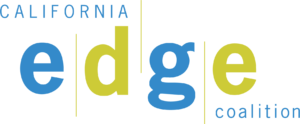California EDGE Coalition Announces New Mission and Vision to Guide Statewide Policy and Advocacy Efforts
SACRAMENTO, CA — June 9, 2025 — The California EDGE Coalition is proud to announce the adoption of a new mission and vision statement, marking a significant step in the organization’s continued evolution and strategic direction. These updated statements reflect EDGE’s commitment to advancing economic mobility and prosperity for all Californians through education and workforce policy change.
Mission: To advocate for education and workforce investments, as well as systems change, through nonpartisan policy engagement, expanding access to high-quality jobs, economic mobility, and family-sustaining prosperity for all Californians.
Vision: We envision a more socially just and economically thriving California where equitable access to education and skills training meets the demands of the labor market, preparing all Californians to achieve lasting economic security, and with collaboration across business, labor, social justice, post-secondary education, and workforce systems – creating the conditions for inclusive prosperity.
“This is a powerful moment for EDGE,” said Linda Collins, Board President of the California EDGE Coalition and Founder & Executive Director of the Career Ladders Project. “Our new mission and vision underscore our shared commitment to education, upward mobility, and cross-sector collaboration – values that are urgently needed to build a more inclusive economy in California.”
“These new statements reaffirm who we are, what we believe, and where we’re going,” said Zima Creason, Executive Director of the California EDGE Coalition. “They reflect the voices of our Board and staff team, and signal a bold commitment to centering opportunity and collaboration in our work.”
This update comes as California faces critical challenges and opportunities in building a resilient and inclusive economy. EDGE will continue to advocate for policies that expand education and training pathways, improve workforce outcomes, and uplift communities across the state – especially those who have been historically underserved.’
Stay Engaged
Join the EDGE Network to stay up to date on policy developments, events, and opportunities to take action. Membership is free and open to all. Sign up at https://tinyurl.com/EDGENetwork.
For more information, visit www.caedge.org.
Media Contact:
Zima Creason
Executive Director, California EDGE Coalition
zcreason@caedge.org
(916) 706-0160 ext. 110
